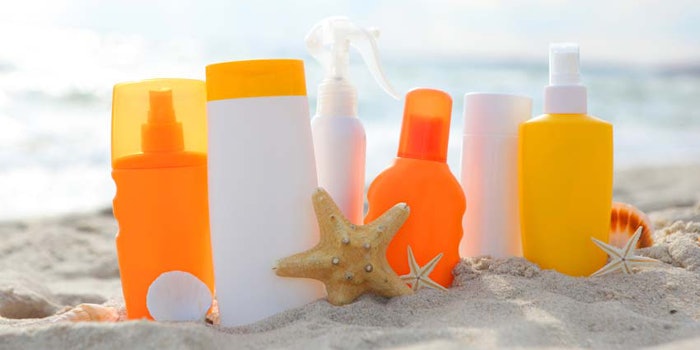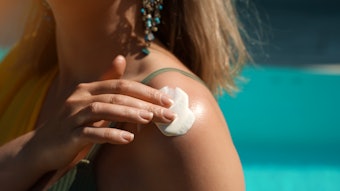
A Letter to the Editor published in Chemical Research in Toxicology highlights several flaws in the presentation of sunscreen research gaining recent media attention.
As previously reported, a paper by Downs, et al., also published in Chemical Research in Toxicology, made headlines as the authors detected benzophenone content in octocrylene-containing sunscreens. This prompted them to call on regulators to remove octocrylene-containing products from the market.
Christian Surber, Ph.D., senior fellow scientist of the University Hospital of Zürich, responded to the study by outlining several crucial areas where the science presented was incomplete or misleading.
See related: Neutrogena Faces Suit Over Benzene in Sunscreen
Cited Flaws
In brief, Surber highlights:
- Failure to discuss the presence of benzophenone in the context of safe concentration threshholds;
- A misleading reference showing percutaneous absorption of benzophenone wherein the solvent used was a penetration enhancer, and lack of consideration for application procedure, vehicles and exposure/concentration;
- Lack of evidence for dermal carcinogenicity of benzophenone/octocrylene and dismissal of other researchers' findings for octocryelene's safe use; furthermore, failing to distinguish endocrine activity versus endocrine-disrupting effects and to consider the entire toxicological data available (i.e., presenting a hazard, not a risk assessment); and
- Referencing only one law (Proposition 65, California) prohibiting the presence of benzophenone from sunscreens and anti-aging creams. The authors did not discuss other relevant documents such as the updated (March 2021) Opinion on octocrylene of the Scientific Committee on Consumer Safety (SCCS) of the European Commission; SCCS opinions are based on holistic risk analyses.
Downs Responses
In brief (see the full article for proper context), in his August 11, 2021, "Response to the Letter to the Editor by Dr. Christian Surber," Downs asserts, in response to one point by Surber, that "[t]he 'comprehensive risk assessment' noted [by Surber] is unfortunately conducted in a vacuum, meaning the risk is normally reduced when exposure is from only one source..."
Responding to another point, Downs states, "Toxicology is a science of worse-case scenarios ... With that said, it is not unusual, and is often a justified default position when conducting a hazard or risk assessment, to exaggerate test conditions to understand the maximum absorption potential of a substance..."
Downs also points to how "the industry manipulates Proposition 65," and how the European Chemicals Agency and U.S. Food and Drug Administration rely on the industry to supply data to substantiate product safety. He likened it to the "fox guarding the hen house."
See the complete response in Chemical Research in Toxicology.
Additional Commentary
In response to Downs's rebuttals, in correspondence with Cosmetics & Toiletries, Surber stated, "They did not really answer my questions, but instead obfuscated with wordy and digressive explanations."
Beyond Surber's critiques, additional industry expert David Steinberg weighed in regarding Downs's reference of Proposition 65.
"When benzophenone went on Proposition 65, I wrote that this is not benzophenone-3 (oxybenzone), and further that it is not the starting material in oxybenzone. It is the starting material for making octocrylene and was used as a UV absorber for nail polishes when we used toluene as the solvent. When toluene was discontinued, we could use other UV absorbers [to protect nail polish colors] in its place."
He continued, "I spoke with the largest producer of octocrylene about the levels of free benzophenone. They checked their last 16 batches and showed very low levels on some batches and high [levels] in others. They checked their production batch records and saw the difference. They changed their procedure to the way that gives very low benzophenone."
Finally, he added he would not be surprised if there were high levels present if the material was made in Asia. "Caveat emptor. It may be cheaper, but ..."










